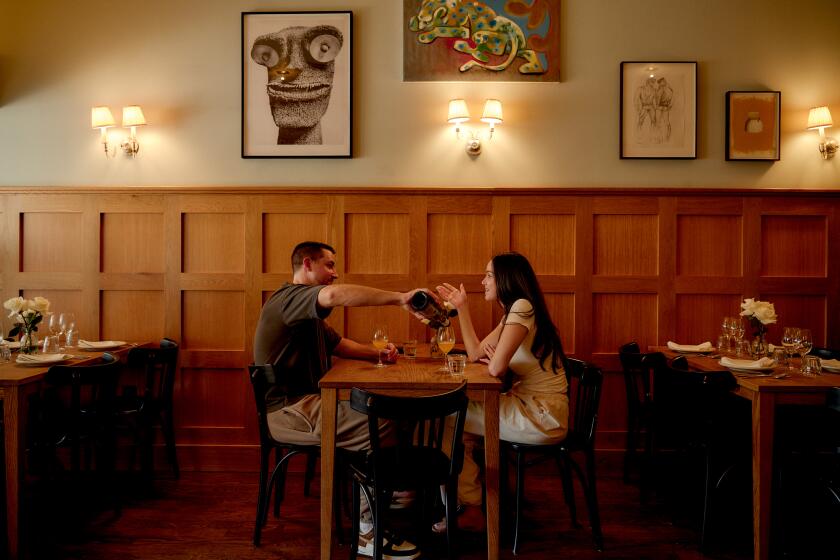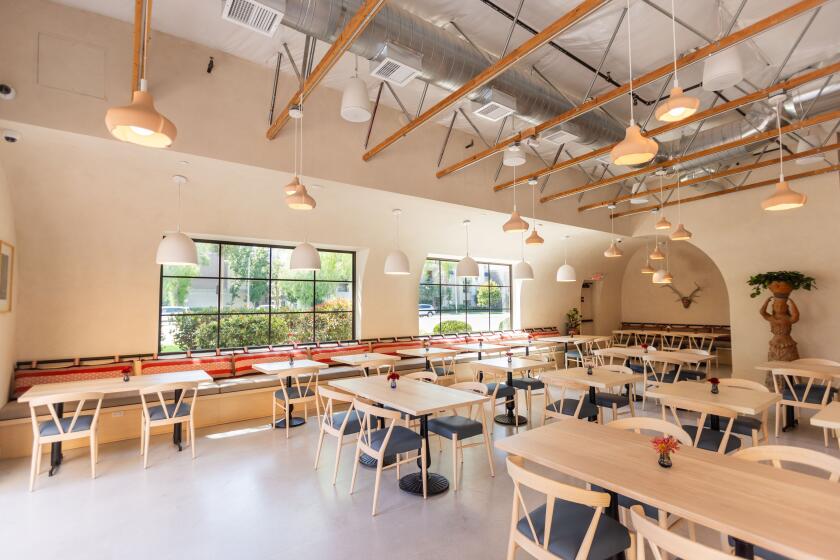Chef Roy Yamaguchi launches his first cruise ship restaurant
When chef Roy Yamaguchi prepares food, his enthusiasm is palpable. Behind the sushi counter in his newest restaurant, the Asian Market Kitchen on the MSC Seaside, he gently slices hamachi for a plate of sashimi. Carefully, he positions translucent slivers of radish and cucumber around the pink-gray fish.
“It’s kind of like modern art,” he says as he squirts a puree of sesame seeds, truffle oil, and soy sauce over the fish. “That’s the great thing about life: everybody has their own expression. What I want to do is express myself through food.”
Whereas some celebrity chefs have larger-than-life charisma, Yamaguchi has a knack for quiet logic behind the scenes. The Honolulu-based James Beard Award-winning chef has written four cookbooks in addition to co-founding and co-chairing the Hawaii Food & Wine Festival. He also hosted the PBS series Hawaii Cooks with Roy Yamaguchi from 1992 through 1997, but he maintains that in front of the camera isn’t for him. Instead, he gets a thrill out of opening restaurants: building the menu, training the chefs, creating a sleek kitchen layout, and problem-solving every step of the way. He opened the first Roy’s in Honolulu in 1988, and he has since opened 30 more restaurants.
Over the years, Yamaguchi has been asked to open restaurants on various cruise ships, too, but he was uninterested in spaces that were already built and were mostly seeking his menu and finishing touches.
When MSC approached him with the same request three years ago, though, the deal was different: he was asked to design and build the restaurant from scratch. For him, it was an opportunity to let his creativity soar: he weighed in on everything from the color palette to the china to the eighteen-track playlist.
But, with a new venue came a new set of challenges. While Yamaguchi was used to the obstacles that come with opening a new spot, he didn’t fully anticipate the limitations that come with being on a ship.
For starters, he uses gas in all of his restaurants, but it is not allowed on the ship. (Instead, he uses an electric range and a hot iron to sear meats and char creme brûlée.) And, although he’s used to switching around a kitchen’s layout overnight in an on-land restaurant, the kitchen of Asian Market Kitchen will have to wait until the ship goes into dry dock to move any large kitchen equipment.
That’s just the first of his space issues. Most of his on-land restaurants seat around 250 guests, but the compact Asian Market Kitchen, which features a sushi bar, a teppanyaki grill, and an à la carte menu, was built to seat just over 100. And, the refrigeration space within the restaurant is not ample enough to accommodate some of the dishes Yamaguchi serves in his other restaurants.
“On a ship, there’s only so many food storage places,” Yamaguchi explains. “I may not be able to put everything that I order into our kitchen. So, when it comes to making the dish or doing the preparation for it, we have to go down 10 floors to another kitchen to get those ingredients. On land, whatever we need is right there.”
The result is a different approach to menu building. Yamaguchi is unable to offer certain dishes such as his Imperial roll, which requires heavy preparation and too many unique ingredients like rice noodles that are fried to order. Instead, he’s modified the Asian Market Kitchen menu so that groups of dishes share base ingredients like lemongrass, kefir lime, fish sauce, curry sauce, and curry paste; they’re then topped with different ingredients that give each a unique flavor.
Bearing the specifications of the ship in mind, Yamaguchi created dishes that are exclusive to Asian Market Kitchen: a mango salad, shrimp salad, and curry-wine-sauce rack of lamb.
He explains that navigating the challenges of opening a restaurant on a ship has not been bad, just different.
“It makes you think, which is good,” Yamaguchi says. “It’s interesting to me; I enjoy the challenges. They make me ask, ‘How can I work around the obstacles and have the end result be the same?’”
The MSC Seaside made a 20-day voyage from Italy to Miami this past December, and Asian Market Kitchen was open and operating during that time. Altogether, Yamaguchi was pleased with the turnout.
“We have a brand-new crew who’s never worked with our food, they’re working day and night, long hours, and with the confinement of space. And they’re turning out some pretty good stuff,” he beams.
But this is just the beginning. The MSC Seaside will run a seven-night itinerary from Miami through the Caribbean, and the Asian Market Kitchen is still “a work in progress.” As the ship navigates the open sea, Yamaguchi, his training crew, and the Asian Market Kitchen staff will continue to make adjustments.
When asked what the Asian Market Kitchen needs to work on, Yamaguchi answers: “anything and everything.”
“But that’s just how restaurants are,” he says matter-of-factly. “They’re always evolving. I’ve been doing this for 30 years, but I’m never complacent. Even when you think you’re doing your best, you can always improve.”
Here are 20 other cruises worth considering.
- Roy’s: Staying Fresh at 28
- Gorgeous Hawaiian Spots That Haven’t Been Overrun by Tourists Gallery
- In Hawaii, Black Market Spam Is a Serious Problem
More to Read
Eat your way across L.A.
Get our weekly Tasting Notes newsletter for reviews, news and more.
You may occasionally receive promotional content from the Los Angeles Times.










